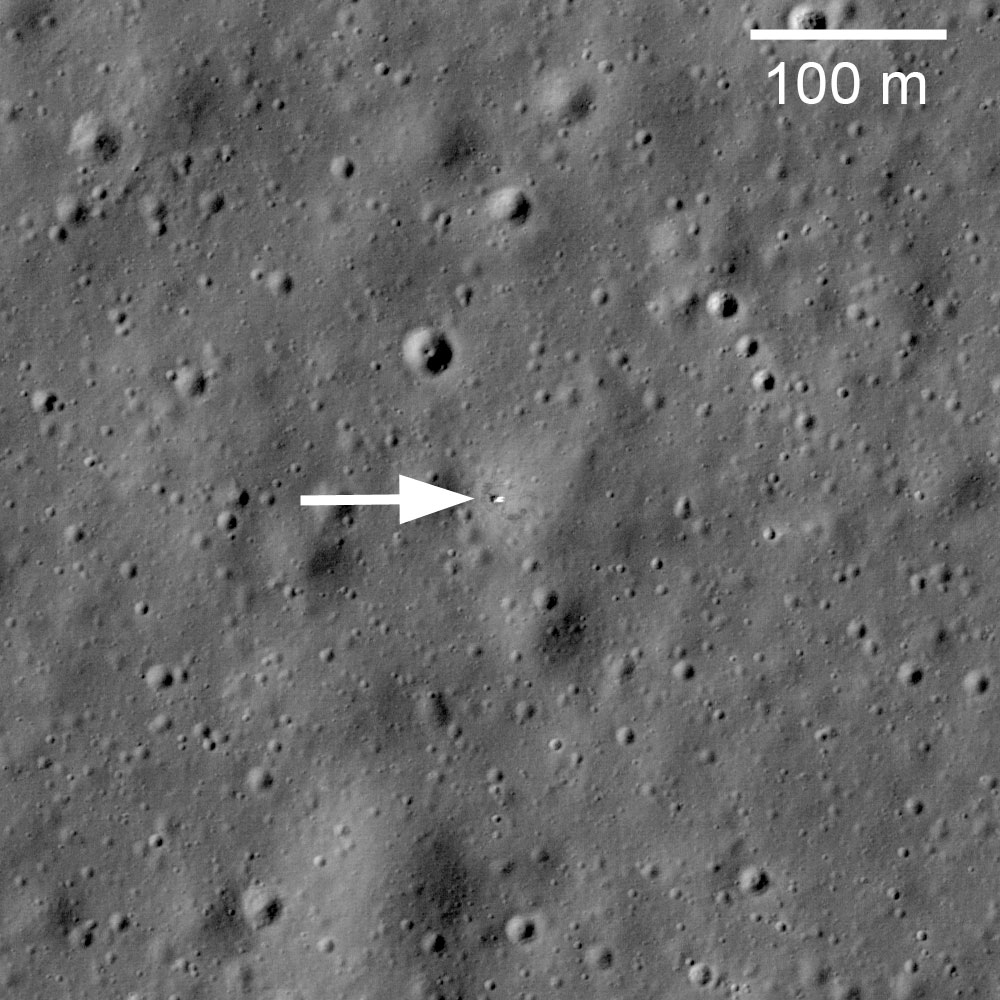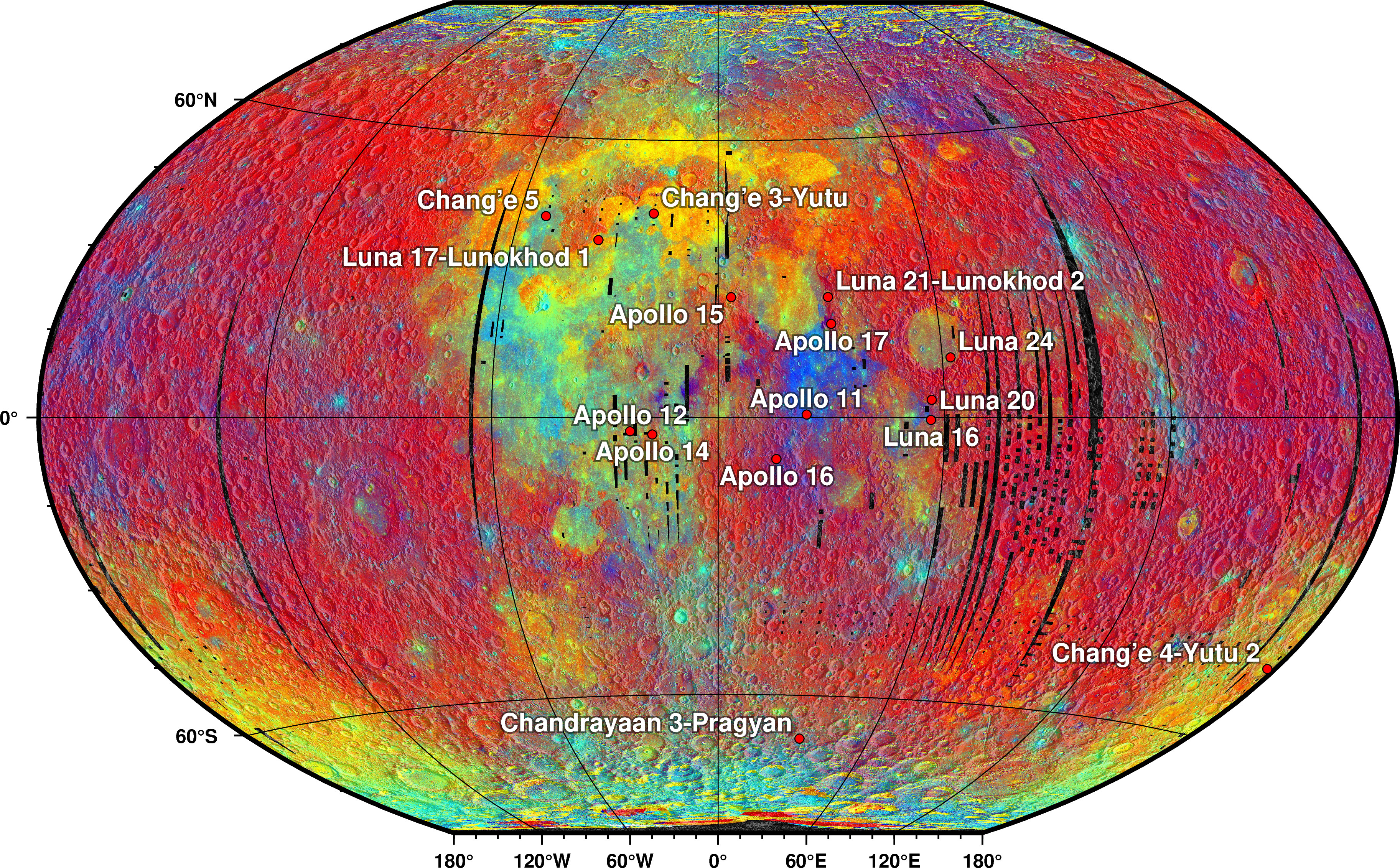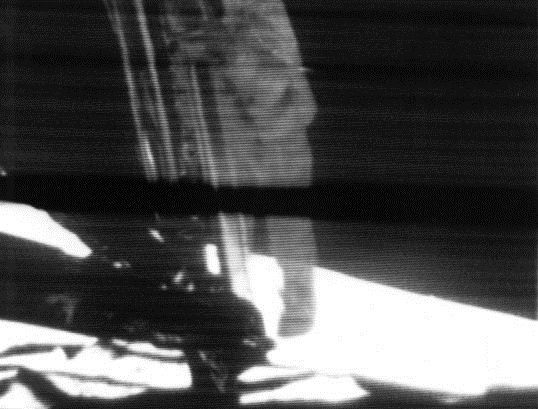|
Lunokhod
Lunokhod ( rus, Луноход, p=lʊnɐˈxot, "Moonwalker") was a series of Soviet robotic lunar rovers designed to land on the Moon between 1969 and 1977. Lunokhod 1 was the first roving remote-controlled robot to land on an extraterrestrial body. The 1969 Lunokhod 1A (Lunokhod 0, Lunokhod No. 201) was destroyed during launch, the 1970 ''Lunokhod 1'' and the 1973 ''Lunokhod 2'' landed on the Moon, and ''Lunokhod 3'' (Lunokhod No. 205, planned for 1977) was never launched. The successful missions were in operation concurrently with the Zond and Luna series of Moon flyby, orbiter and landing missions. The Lunokhods were primarily designed to support the Soviet human Moon missions during the Moon race. Instead, they were used as remote-controlled robots for exploration of the lunar surface and return its pictures after the Apollo human lunar landings and cancellation of the Soviet human Moon programme. The Lunokhods were transported to the lunar surface by Luna spa ... [...More Info...] [...Related Items...] OR: [Wikipedia] [Google] [Baidu] |
Lunokhod 2
''Lunokhod 2'' (russian: Луноход-2 ("Moonwalker 2"), also known as Аппарат 8ЕЛ № 204 ("Device 8EL No. 204")) was the second of two unmanned lunar rovers that landed on the Moon by the Soviet Union as part of the Lunokhod programme. The '' Luna 21'' spacecraft landed on the Moon and deployed the second Soviet lunar rover, ''Lunokhod 2'', in January 1973.Lunokhod 02 NASA Solar System Exploration; page updated March 15, 2018. Retrieved May 31, 2018. The primary objectives of the mission were to collect images of the lunar surface, examine ambient light levels to determine the feasibility of astronomical observations from the Moon, perform |
Lunokhod 1
''Lunokhod 1'' ( Russian: Луноход-1 ("Moonwalker 1"), also known as Аппарат 8ЕЛ № 203 ("Device 8EL No. 203")) was the first of two robotic lunar rovers landed on the Moon by the Soviet Union as part of its Lunokhod program. The '' Luna 17'' spacecraft carried ''Lunokhod 1'' to the Moon in 1970. ''Lunokhod 1'' was the first remote-controlled robot "rover" to freely move across the surface of an astronomical object beyond the Earth. It was also the first wheeled craft on another celestial body. Lunokhod 0 (No.201), the previous and first attempt to do so, launched in February 1969 but failed to reach orbit. Although only designed for a lifetime of three lunar days (approximately three Earth months), ''Lunokhod 1'' operated on the lunar surface for eleven lunar days (321 Earth days) and traversed a total distance of 10.54 km. Rover description ''Lunokhod 1'' was a lunar vehicle formed of a tub-like compartment with a large convex lid on eight independently ... [...More Info...] [...Related Items...] OR: [Wikipedia] [Google] [Baidu] |
Lunar Rover
A lunar rover or Moon rover is a space exploration vehicle designed to move across the surface of the Moon. The Apollo Program's Lunar Roving Vehicle was driven on the Moon by members of three American crews, Apollo 15, 16, and 17. Other rovers have been partially or fully autonomous robots, such as the Soviet Union's Lunokhods and the Chinese '' Yutus''. Three countries have had operating rovers on the Moon: the Soviet Union, the United States and China. An Indian mission failed while Japan and Greece currently have planned missions. Past missions Lunokhod 1 Lunokhod 1 (Луноход) was the first of two polycrystalline-panel-powered robotic lunar rovers landed on the Moon by the Soviet Union as part of its Lunokhod program after a previous unsuccessful attempt of a launch probe with Lunokhod 0 (No.201) in 1969. The spacecraft which carried Lunokhod 1 was named Luna 17. The spacecraft soft-landed on the Moon in the Sea of Rains on November 1970. Lunokhod was the first ... [...More Info...] [...Related Items...] OR: [Wikipedia] [Google] [Baidu] |
Alexander Kemurdzhian
Aleksandr Leonovich Kemurdzhian (russian: Александр Леонович Кемурджиан; 4 October 192125 February 2003) was a Soviet mechanical engineer who worked at the VNIITransmash institute for the most of the second half of the 20th century. He is best known for designing the metal chases for ''Lunokhod 1'', the first ever planetary rover for space exploration in the Soviet space program. Early life Kemurdzhian was born to Armenian parents on 4 October 1921 in Vladikavkaz, today the capital of North Ossetia. His father (b. 1898) and mother (b. 1901) were volunteers in the Russian Civil War with the 11th Red Army who happened to be in Vladikavkaz at the time of his birth. His Turkish-Armenian paternal grandparents were from Trebizond who settled in Batumi in the late 19th century. His mother was from Rostov-on-Don. In 1940 he enrolled at the Bauman Higher Technical College in Moscow. With the start of the Eastern Front of World War II in 1941, he and othe ... [...More Info...] [...Related Items...] OR: [Wikipedia] [Google] [Baidu] |
Luna Programme
The Luna programme (from the Russian word "Luna" meaning "Moon"), occasionally called ''Lunik'' by western media, was a series of robotic spacecraft missions sent to the Moon by the Soviet Union between 1959 and 1976. Fifteen were successful, each designed as either an orbiter or lander, and accomplished many firsts in space exploration. They also performed many experiments, studying the Moon's chemical composition, gravity, temperature, and radiation. Twenty-four spacecraft were formally given the Luna designation, although more were launched. Those that failed to reach orbit were not publicly acknowledged at the time, and not assigned a Luna number. Those that failed in low Earth orbit were usually given Cosmos designations. The estimated cost of the Luna programme in 1964 was US$6–10 billion. Mission types The name ''Luna'' was used to designate a variety of spacecraft designs, to achieve several types of missions: Impactors Impactor spacecraft are designed to h ... [...More Info...] [...Related Items...] OR: [Wikipedia] [Google] [Baidu] |
Moon Landing
A Moon landing is the arrival of a spacecraft on the surface of the Moon. This includes both crewed and robotic missions. The first human-made object to touch the Moon was the Soviet Union's Luna 2, on 13 September 1959. The United States' Apollo 11 was the first crewed mission to land on the Moon, on 20 July 1969. There were six crewed U.S. landings between 1969 and 1972, and numerous uncrewed landings, with no soft landings happening between 22 August 1976 and 14 December 2013. The United States is the only country to have successfully conducted crewed missions to the Moon, with the last departing the lunar surface in December 1972. All soft landings took place on the near side of the Moon until 3 January 2019, when the Chinese Chang'e 4 spacecraft made the first landing on the far side of the Moon. Uncrewed landings After the unsuccessful attempt by Luna 1 to land on the Moon in 1959, the Soviet Union performed the first hard Moon landing – "hard" meanin ... [...More Info...] [...Related Items...] OR: [Wikipedia] [Google] [Baidu] |
Soviet Space Program
The Soviet space program (russian: Космическая программа СССР, Kosmicheskaya programma SSSR) was the national space program of the former Union of Soviet Socialist Republics (USSR), active from 1955 until the dissolution of the Soviet Union in 1991. Soviet investigations in rocketry began with the formation of a research laboratory in 1921, but these efforts were hampered by the devastating war with Germany. Competing in the Space Race with the United States and later with the European Union and China, the Soviet program was notable in setting many records in space exploration, including the first intercontinental missile that launched the first satellite and sent the first animal into Earth orbit in 1957, and placed the first human in space in 1961. In addition, the Soviet program also saw the first woman in space in 1963 and a cosmonaut performing the first spacewalk in 1965. Other milestones included computerized robotic missions explo ... [...More Info...] [...Related Items...] OR: [Wikipedia] [Google] [Baidu] |
Soviet Crewed Lunar Programs
The Soviet crewed lunar programs were a series of programs pursued by the Soviet Union to land humans on the Moon, in competition with the United States Apollo program. The Soviet government publicly denied participating in such a competition, but secretly pursued two programs in the 1960s: crewed lunar flyby missions using Soyuz 7K-L1 (Zond) spacecraft launched with the Proton-K rocket, and a crewed lunar landing using Soyuz 7K-LOK and LK spacecraft launched with the N1 rocket. Following the dual American successes of the first crewed lunar orbit on 24–25 December 1968 (Apollo 8) and the first Moon landing on July 20, 1969 (Apollo 11), and a series of catastrophic N1 failures, both Soviet programs were eventually brought to an end. The Proton-based Zond program was canceled in 1970, and the N1-L3 program was ''de facto'' terminated in 1974 and officially canceled in 1976. Details of both Soviet programs were kept secret until 1990 when the government allowed them to be ... [...More Info...] [...Related Items...] OR: [Wikipedia] [Google] [Baidu] |
Lavochkin
NPO Lavochkin (russian: НПО Лавочкина, OKB-301, also called Lavochkin Research and Production Association or shortly Lavochkin Association, LA) is a Russian aerospace company. It is a major player in the Russian space program, being the developer and manufacturer of the Fregat upper stage, as well as interplanetary probes such as Fobos-Grunt. As of 2015, it was headed by Sergei Lemeshevskii. On August 10, 2017 the Lavochkin Association's Board of Directors appointed Vladimir Kolmykov Director General of the enterprise. Overview The company develops and manufactures spacecraft such as the Fregat rocket upper stages, satellites and interplanetary probes. It is a contractor for a number of military programs, such as the Oko early warning satellite, Prognoz and Araks programmes as well as the civilian program Kupon. One of the company's most notable projects was the participation in the failed Fobos-Grunt sample return mission. NPO Lavochkin has also developed the ... [...More Info...] [...Related Items...] OR: [Wikipedia] [Google] [Baidu] |
Georgy Babakin
Georgy Nikolayevich Babakin (russian: Гео́ргий Никола́евич Баба́кин; 13 November 1914 – 3 August 1971) was a Soviet engineer working in the space program. He was Chief Designer at the Lavochkin Design Bureau from 1965 until his death. Babakin's early career was spent in radio engineering, starting with a job at the Moscow telephone company in 1930, working on an urban radio network. From 1943 to 1949, Babakin worked on radar targeting systems at the Institute of Automation (VSNITO), where he became its chief engineer. Babakin became involved in the Soviet space program in 1949, working in Boris Chertok's division of NII-88 on surface-to-air missiles and targeting systems. In 1952, he was part of a group transferred to Lavochkin's bureau OKB-301 to work on the intercontinental cruise missile Burya and the V-300 anti-aircraft missile. In 1960, Lavochkin died at an aircraft show (literally died in Babakin's arms), and the bureau was subsumed by ... [...More Info...] [...Related Items...] OR: [Wikipedia] [Google] [Baidu] |
Soviet Moonrover
The Soviet Union,. officially the Union of Soviet Socialist Republics. (USSR),. was a transcontinental country that spanned much of Eurasia from 1922 to 1991. A flagship communist state, it was nominally a federal union of fifteen national republics; in practice, both its government and its economy were highly centralized until its final years. It was a one-party state governed by the Communist Party of the Soviet Union, with the city of Moscow serving as its capital as well as that of its largest and most populous republic: the Russian SFSR. Other major cities included Leningrad (Russian SFSR), Kiev (Ukrainian SSR), Minsk (Byelorussian SSR), Tashkent (Uzbek SSR), Alma-Ata (Kazakh SSR), and Novosibirsk (Russian SFSR). It was the largest country in the world, covering over and spanning eleven time zones. The country's roots lay in the October Revolution of 1917, when the Bolsheviks, under the leadership of Vladimir Lenin, overthrew the Russian Provisional Government tha ... [...More Info...] [...Related Items...] OR: [Wikipedia] [Google] [Baidu] |
Zvezda (moonbase)
Zvezda moonbase (russian: звезда, ''"star"''), also called DLB Lunar Base, was a Soviet plan and project from 1962 to 1974 to construct a crewed moonbase as successor to the N1-L3 human lunar expedition program. Zvezda moonbase was canceled with the rest of the Soviet human lunar programs. Implementation The base's main habitation module would first be delivered to the Moon. Later automatic spacecraft, including the Lunokhod rover, would be delivered, followed by a human crew and more modules. For the safety of the crew, the habitation modules might have been covered with regolith. In order to allow for exploration or repositioning of the base, the habitation modules may have been installed on wheel chassis, and multiple docked to form a movable train. Energy for the base would have been provided by atomic batteries and a nuclear reactor. The moonbase project was ordered by the Soviet space chief Korolyov to Vladimir Barmin's Spetcmash bureau. The project was named ... [...More Info...] [...Related Items...] OR: [Wikipedia] [Google] [Baidu] |







